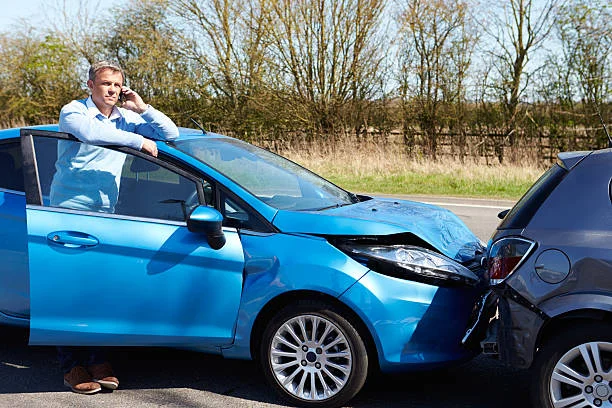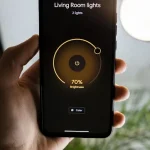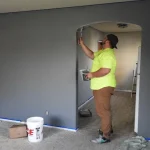Getting hit by an uninsured driver can be financially devastating. Medical bills pile up. Vehicle damage costs money. Lost wages hurt. If the other driver has no insurance, how do you get paid? That’s where uninsured motorist coverage comes in, but many drivers have no idea what it actually covers or how it works. Understanding your protection prevents nasty surprises when you need it most.
Uninsured motorist protection is basically insurance against being hit by someone without insurance. It covers your medical expenses, lost wages, and pain and suffering when an uninsured driver causes your accident. The coverage limits are set when you purchase your policy. Most drivers don’t think about this until they need it, then realize they didn’t buy enough protection. Understanding what it does and doesn’t cover prevents that painful discovery.
Getting hit by an uninsured driver shouldn’t leave you financially helpless. Uninsured motorist protection can bridge the gap, but there are limits. Understanding how it really works, when it applies, and when it doesn’t protects you before an accident happens. Here’s the actual truth about this coverage.
What Uninsured and Underinsured Coverage Actually Cover
Uninsured motorist coverage kicks in when the at-fault driver has zero insurance. Your policy pays your medical bills, lost wages, and pain and suffering up to your coverage limit. If you have $100,000 in uninsured motorist coverage and your damages total $75,000, you get paid. If damages exceed your limit, you’re stuck paying the difference yourself. That’s why coverage limits matter enormously.
Underinsured motorist coverage is slightly different. It applies when the at-fault driver has some insurance but not enough to cover your damages. If their limit is $25,000 but your damages are $100,000, underinsured coverage fills the gap up to your policy limits. Many drivers carry uninsured and underinsured coverage as one combined policy. Understanding what you have prevents confusion when claims happen.
Both coverages require you to prove the other driver was at fault. If liability is shared or disputed, coverage might not apply. Police reports and accident investigations determine fault. Having clear documentation strengthens your claim when coverage is needed. That’s why scene evidence matters immediately after any accident.
Don’t miss the highlight — explore our related post of the week!
How Fault and Policy Limits Affect Your Claim
Your own negligence can reduce uninsured motorist benefits. If you were partially at fault, your recovery gets reduced proportionally. Comparative negligence laws vary by state but generally reduce recovery based on your fault percentage. A $100,000 claim becomes $70,000 if you were 30% at fault. Understanding this makes the difference between what you might receive and what you actually get.
Policy limits set your maximum recovery. If you have $50,000 uninsured motorist coverage, that’s your ceiling regardless of actual damages. Many people underestimate how fast medical bills exceed $50,000 for serious injuries. Hospital stays, surgeries, and ongoing therapy get expensive immediately. Reviewing your coverage limits periodically ensures they’re adequate for serious accidents.
The at-fault driver’s policy limits also matter even with your uninsured motorist coverage. If they have minimal insurance, uninsured motorist coverage fills gaps. But if you exhaust their policy and your own uninsured motorist coverage, you might still face uncompensated damages. That gap is why adequate coverage matters before accidents happen.
Common Situations Where Coverage Might Not Apply
Hit-and-run accidents sometimes don’t trigger uninsured motorist coverage because you can’t identify the other driver. Your policy might require proof of a collision with an identified vehicle. A phantom vehicle that hits you then flees might not qualify. Reading your specific policy language matters because terms vary between insurers.
Some policies exclude certain types of accidents. Accidents in unregistered vehicles might not be covered. Accidents while using your vehicle for commercial purposes might not qualify. Rental vehicles sometimes have coverage gaps. Your specific policy determines what’s included. Assumptions about coverage can be dangerously wrong when claims happen.
Intentional acts usually aren’t covered. If someone deliberately hits you, that’s not an accident covered by uninsured motorist protection. Criminal activity falls outside insurance coverage. That’s why police reports matter for establishing that accidents were actual accidents, not intentional harm.
How to Strengthen Your Policy Before an Accident Happens
Review your uninsured motorist limits annually. As medical costs rise and your assets grow, adequate coverage changes. What seemed sufficient five years ago might be inadequate now. Increasing limits usually costs very little but provides crucial protection. That small expense prevents catastrophic financial exposure if serious accidents happen.
Combine uninsured motorist with underinsured motorist coverage. Single protection might not be enough if the at-fault driver has minimal insurance. Combined coverage ensures gaps get filled. Most insurers offer these together cheaply. Having both is standard responsible coverage that most drivers should carry.
Document everything related to accidents. Photos of the scene, vehicle damage, and injuries. Witness contact information. Police report numbers. Medical records and bills. That documentation supports claims when you need them. Making this a habit ensures you’re prepared if accidents happen. Documentation strength directly affects whether claims get paid fully.
Bottom Line
Uninsured motorist protection bridges the financial gap when uninsured drivers cause accidents. Your coverage limits determine your maximum recovery. Fault determination affects your payment. Policy language determines what’s actually covered. Reading your policy carefully before accidents happen prevents expensive surprises when you need coverage most.
Many drivers carry inadequate uninsured motorist limits without realizing it. Twenty minutes reviewing your policy might reveal you need more protection. That small action prevents potential financial catastrophe. Upgrading coverage costs minimal amounts but provides maximum security.
Review your uninsured motorist protection before you need it. Ensure coverage limits match your actual needs. Combine uninsured and underinsured motorist protection. Document accidents thoroughly. That preparation protects you financially when the worst happens.
Chosen for you — check out our most inspiring featured posts now at 2A Magazine!







